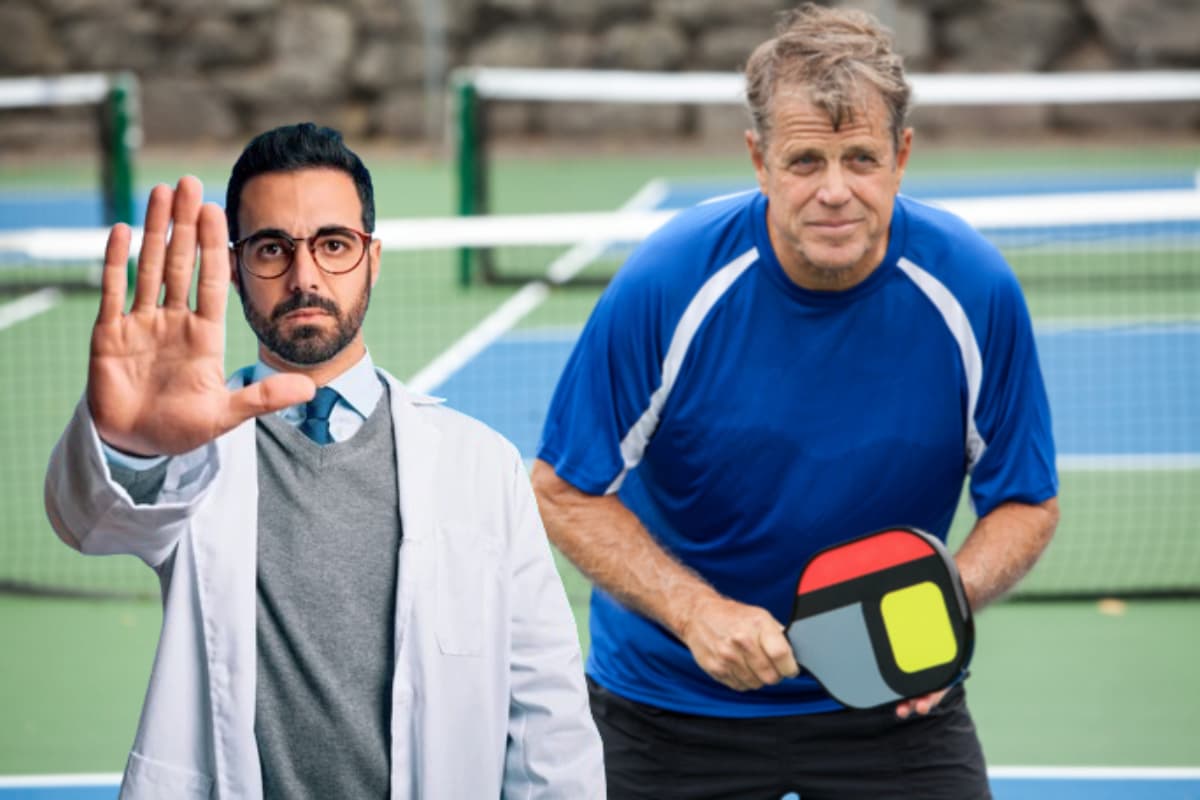Pickleball, a fast-growing sport played with a perforated plastic ball and wooden paddles on a badminton-sized court, has seen a significant increase in both popularity and related injuries in recent years.
According to USA Pickleball, the number of players soared from 4.8 million in 2021 to a staggering 8.9 million in 2023.
As a result of such expansion, the incidence of bone fractures linked to pickleball rose by 200% over two decades, as reported at the annual meeting of the American Academy of Orthopaedic Surgeons.
This data only refers to fractures; more common soft tissue injuries (e.g., sprains or damage to the ACL) were not included.
Other typical pickleball injuries encompass rotator cuff issues, arthritis exacerbation, Achilles tendon strains/tears, and foot fractures.
“While pickleball is a great sport, nothing is without risk,” says Yasmine Ghattas, the study’s lead author.
Understanding the Causes behind the Growing Number of Injuries
An obvious explanation for the surge in pickleball-related injuries is the sport’s rapid growth. However, other factors may influence these figures.
A separate study co-authored by Dr. Eric Bowman from Vanderbilt University Medical Center indicates that between 2017 and 2022, the prevalence of pickleball-related injuries outpaced the rise in its popularity.
Starting New Sports Safely
Dr. Spencer Stein from NYU Langone Health recommends individuals consult their primary care doctor before getting involved in any new sports activities, pickleball included.
This may help prevent injuries and ensure individuals are prepared for the physical demands required.
Strategies to Prevent Pickleball Injuries
To reduce the risk of sustaining injuries during this enjoyable yet potentially hazardous sport, consider implementing the following safety precautions:
- Warm up properly: Warming up is crucial for all athletic pursuits. Before engaging in vigorous pickleball play, spend a few minutes stretching and performing light exercises to prepare your body.
- Select appropriate footwear: Choose shoes specifically designed for pickleball or similar sports activities to provide proper support and stability for your feet.
- Learn proper technique: Understanding and executing the correct form will not only improve your overall performance but also minimize the risk of injury. Consider taking lessons from professionals or watching instructional videos online.
- Maintain fitness levels: Staying fit will better equip you to cope with the demands of the sport, thereby reducing your vulnerability to harm. Try incorporating strength training, flexibility exercises, and cardiovascular activities into your routine.
- Know your limits: Listen to your body and refrain from overexerting yourself on the court. Recognize when it’s time to take breaks or stop playing altogether to avoid unnecessary strain.
- Use protective gear: Equipment such as knee pads, elbow guards, and wrist supports can protect your joints and minimize the likelihood of injury during gameplay.
By integrating these measures, players can mitigate the risks associated with pickleball, allowing them to safely enjoy its numerous health benefits and competitive excitement.
Conclusion: Enjoying Pickleball While Being Mindful of Injury Risks
While the increasingly popular sport of pickleball presents certain hazards, several strategies can be employed to decrease injury susceptibility.
By getting appropriate medical clearance, learning proper technique, and adopting pre-emptive safety measures like warming up and wearing suitable footwear, players can participate in this engaging activity with reduced risk.







